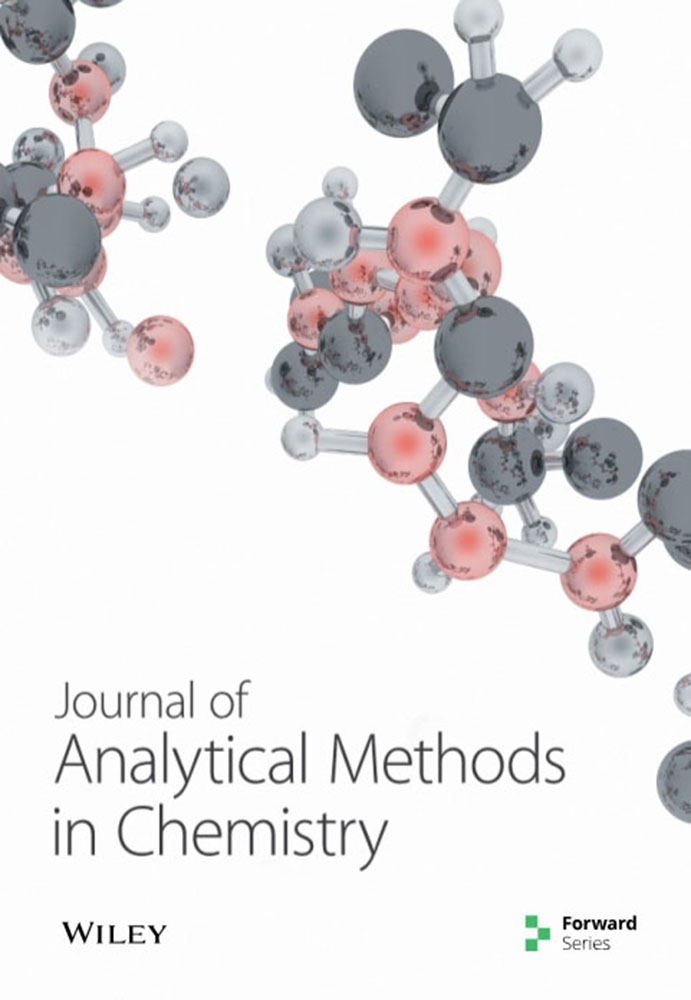石墨烯/玻璃碳电极上吸电子取代基集成用于橙汁和牛奶中葡萄糖电催化分析的增强型电化学传感器
IF 2.3
3区 化学
Q3 CHEMISTRY, ANALYTICAL
引用次数: 2
摘要
在这项工作中,通过在石墨烯修饰的玻璃碳电极(hmpfp -graphene/GCE)上对1-苯基-3-甲基-4-(4-氟苯甲酰)-5-吡唑酮进行吸电子取代基修饰,开发了一种用于葡萄糖检测的新型电化学传感器。利用扫描电镜、傅里叶变换红外光谱、拉曼光谱和核磁共振光谱对其进行表征,结果表明hmpfp -石墨烯纳米复合材料的制备成功,可作为葡萄糖检测的电活性探针。hmpfbp -石墨烯/GCE的电子转移能力已通过循环伏安法和电化学阻抗谱分析成功揭示。在pH、HPMpFP、石墨烯成分等不同参数下,方波伏安峰值电流分布清晰,扫描速率效应明显,显示出良好的电化学性能。高电化学评价表面积使用时安培法表明,目前的葡萄糖检测响应加强。工作电位为0.4 V时,计时电流测量结果线性范围为1 × 103 ~ 90µM和88 ~ 1µM,检出限为0.74µM (S/N = 3)。在实际样品分析中显示出可接受的回收率。该复合材料的电化学传感性能表明,它可能是一个有前途的葡萄糖传感器的候选者,它大大扩展了电化学领域的应用范围。本文章由计算机程序翻译,如有差异,请以英文原文为准。
Enhanced Electrochemical Sensor for Electrocatalytic Glucose Analysis in Orange Juices and Milk by the Integration of the Electron-Withdrawing Substituents on Graphene/Glassy Carbon Electrode
In this work, a novel electrochemical sensor was developed by electron-withdrawing substituent modification of 1-phenyl-3-methyl-4-(4-fluorobenzoyl)-5-pyrazolone on a graphene-modified glassy carbon electrode (HPMpFP-graphene/GCE) for glucose detection. The results of characterizations using a scanning electron microscope, Fourier transform infrared spectroscopy, Raman spectroscopy, and nuclear magnetic resonance spectroscopy showed the successful fabrication of HPMpFP-graphene nanocomposite, which served as an electroactive probe for glucose detection. The electron transfer ability of HPMpFBP-graphene/GCE has been successfully revealed using cyclic voltammetry and electrochemical impedance spectroscopy results. The good electrochemical performance was shown by well-defined peak currents of square wave voltammetry under various parameters, including pH, HPMpFP and graphene composition, and scan rate effect. A high electrochemically evaluated surface area using chronoamperometry suggested that the present glucose detection response was intensified. The chronoamperometry results at a work potential of 0.4 V presented a wide linear range of 1 × 103–90 µM and 88–1 µM with 0.74 µM (S/N = 3) as the detection limit. An acceptable recovery has been revealed in the real sample analysis. The electrochemical sensing behaviour of the composite indicates that it may be a promising candidate for a glucose sensor and it significantly extends the range of applications in the electrochemical field.
求助全文
通过发布文献求助,成功后即可免费获取论文全文。
去求助
来源期刊

Journal of Analytical Methods in Chemistry
CHEMISTRY, ANALYTICAL-ENGINEERING, CIVIL
CiteScore
4.80
自引率
3.80%
发文量
79
审稿时长
6-12 weeks
期刊介绍:
Journal of Analytical Methods in Chemistry publishes papers reporting methods and instrumentation for chemical analysis, and their application to real-world problems. Articles may be either practical or theoretical.
Subject areas include (but are by no means limited to):
Separation
Spectroscopy
Mass spectrometry
Chromatography
Analytical Sample Preparation
Electrochemical analysis
Hyphenated techniques
Data processing
As well as original research, Journal of Analytical Methods in Chemistry also publishes focused review articles that examine the state of the art, identify emerging trends, and suggest future directions for developing fields.
 求助内容:
求助内容: 应助结果提醒方式:
应助结果提醒方式:


